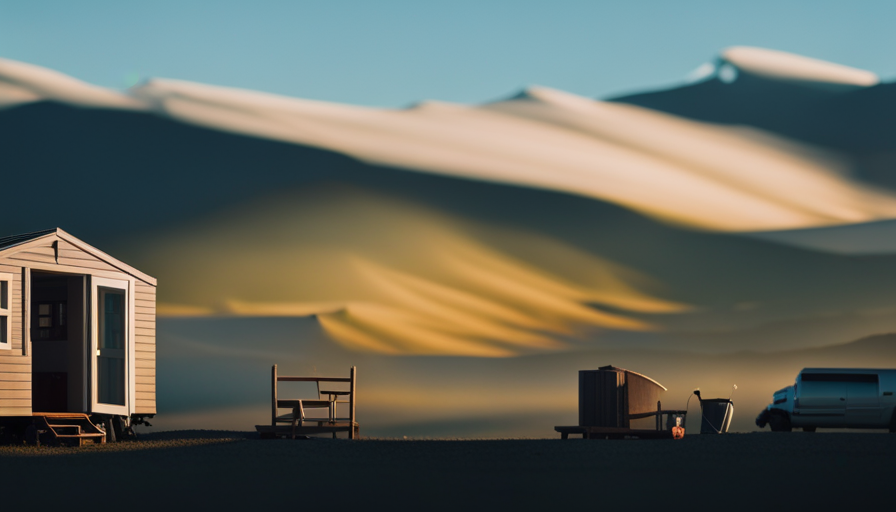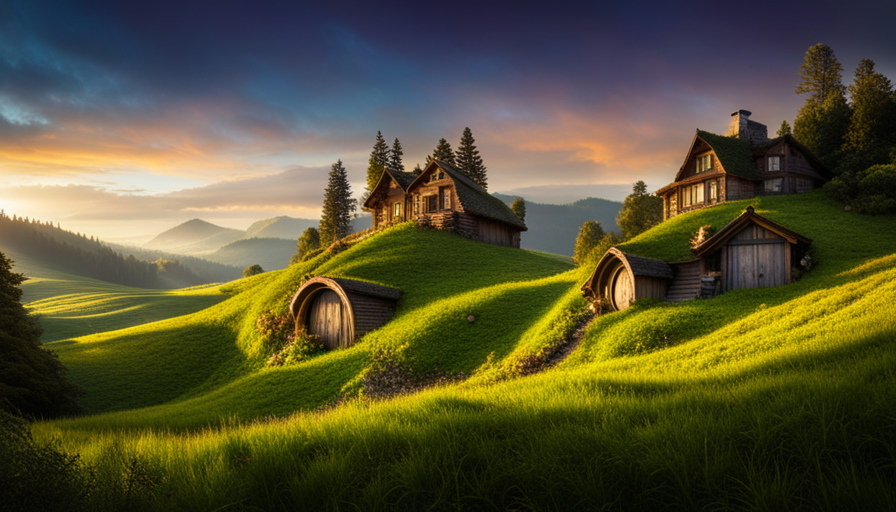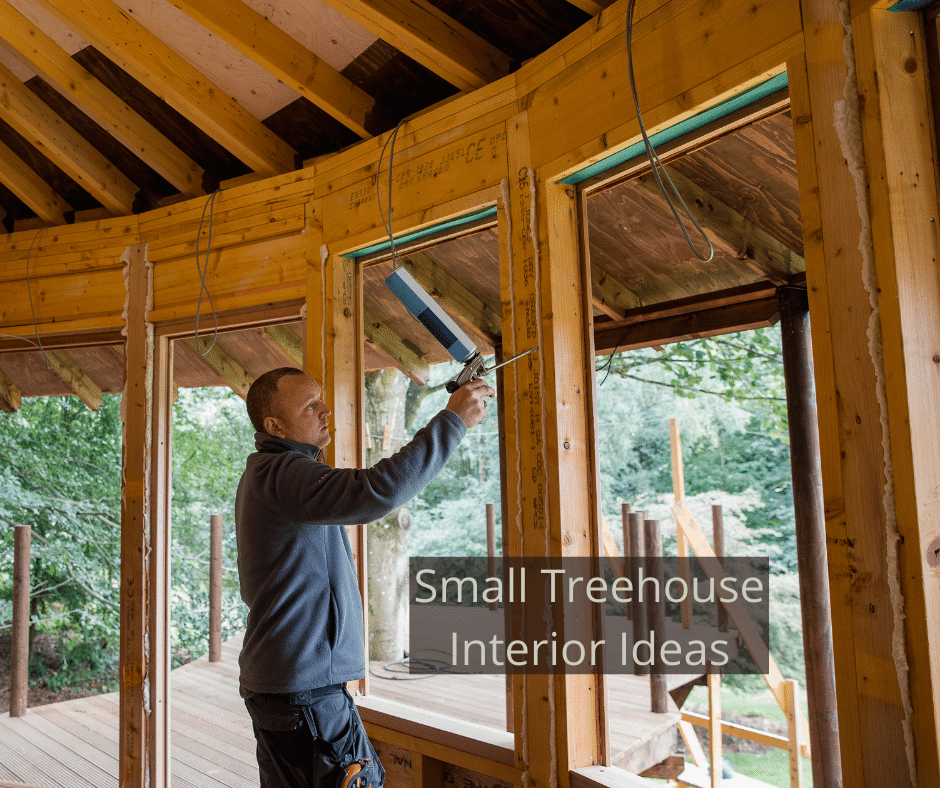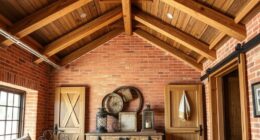Have you ever thought about why tiny houses have been gaining popularity recently?
Well, let me tell you, there’s more to these small abodes than meets the eye. As someone who has explored both the world of tiny houses and mobile homes, I can confidently say that a tiny house is far superior in many ways.
From its compact size and efficient use of space to its customizable design and environmental sustainability, a tiny house offers a multitude of advantages over a mobile home.
Not only are they more affordable, but they also provide a greater sense of mobility, flexibility, and connection to nature.
Plus, with their energy efficiency and lower utility bills, tiny houses allow you to live a more sustainable lifestyle while saving money in the long run.
So, if you’re ready to embark on a journey towards a simpler, more fulfilling life, join me as we dive into the world of tiny houses and discover why they are truly better than mobile homes.
Key Takeaways
- Tiny houses offer advantages over mobile homes in terms of affordability, mobility, and connection to nature.
- They maximize space with clever storage solutions and multi-purpose furniture, eliminating wasted space and unnecessary rooms.
- Tiny houses are cheaper to build and maintain compared to mobile homes, providing long-term financial benefits such as lower upfront costs, reduced utility bills, lower property taxes, and insurance premiums.
- They promote environmental sustainability by consuming fewer resources, producing less waste, and using less energy, making them more energy-efficient than mobile homes.
Compact Size and Efficient Use of Space
One of the reasons why a tiny house is superior to a mobile home is its ability to maximize space and make every square inch count. With a compact size and efficient use of space, tiny houses offer a clever solution for those seeking a minimalist lifestyle without sacrificing functionality.
Tiny houses are designed to be small in size, typically ranging from 100 to 400 square feet. This compact size allows for a more efficient use of space compared to mobile homes, which tend to be larger and have more wasted space. In a tiny house, every nook and cranny is utilized to its fullest potential, with clever storage solutions and multi-purpose furniture. From hidden storage compartments to built-in shelving, tiny houses are designed to maximize storage space and minimize clutter.
In addition to the compact size, the efficient use of space in tiny houses extends to the layout and design. Open floor plans and strategically placed windows create an illusion of spaciousness, making the small space feel larger and more inviting. Every room serves a purpose, and there is no wasted space or unnecessary rooms.
Transitioning to the subsequent section about ‘lower cost and affordability’, it’s important to note that tiny houses not only make the most of limited space, but they also offer a more cost-effective housing option compared to mobile homes.
Lower Cost and Affordability
To save money and make it more affordable, you can opt for a compact dwelling that maximizes space and minimizes expenses. One of the main advantages of a tiny house over a mobile home is the lower cost and affordability it offers. Tiny houses are significantly cheaper to build and maintain compared to mobile homes. The reduced square footage means lower material and labor costs during construction. Additionally, the smaller size of a tiny house results in lower maintenance expenses, as there is less space to clean and repair.
Furthermore, investing in a tiny house can be a smart long-term financial decision. With lower upfront costs and ongoing expenses, tiny houses allow for more financial freedom and flexibility. They require less energy to heat or cool, resulting in reduced utility bills. Moreover, their compact size means lower property taxes and insurance premiums. This makes a tiny house a more sustainable and financially feasible option for individuals or families looking to downsize or enter the housing market.
In order to illustrate the cost advantages of a tiny house, consider the following table:
| Expense | Tiny House | Mobile Home |
|---|---|---|
| Construction | $30,000 | $60,000 |
| Maintenance | $500/year | $1,000/year |
As you can see, the savings in both construction and maintenance costs are significant when choosing a tiny house.
Transitioning to the next section about mobility and flexibility, it is important to consider how tiny houses provide not just financial benefits, but also a sense of freedom and adaptability.
Mobility and Flexibility
With its ability to move and adapt, a tiny house offers the freedom to explore new horizons and create a flexible lifestyle.
One of the key advantages of a tiny house over a mobile home is the mobility options it provides. Unlike a mobile home, which typically requires a vehicle to tow it, a tiny house can be easily transported using a trailer or flatbed truck. This means that you can change your surroundings whenever you desire, whether it’s moving to a different city or simply relocating within the same neighborhood.
However, it’s important to note that mobility does come with its own set of logistical challenges. You need to consider factors such as permits, zoning regulations, and access to utilities before deciding to move your tiny house. Additionally, you may need to find suitable parking or storage options when you’re not on the move.
Nevertheless, the ability to have a home that can be easily transported offers a level of flexibility that is unmatched by traditional mobile homes. It allows you to embrace a nomadic lifestyle or simply have the option to move if your circumstances change.
In the next section, we will explore another advantage of tiny houses – their customizable design and personalization options.
Customizable Design and Personalization
Get ready to unleash your creativity and design the ultimate dream home on wheels with a customizable tiny house that lets you personalize every inch of your living space. One of the key advantages of a tiny house over a mobile home is the wide range of customization options available. Unlike mobile homes, which often have limited design choices, tiny houses offer endless possibilities for creating a space that truly reflects your style and personality.
With a tiny house, you have the freedom to choose everything from the layout and size of each room to the materials used for flooring, walls, and countertops. You can add unique architectural elements, such as skylights or built-in storage solutions, to maximize space and functionality. The ability to personalize every aspect of your tiny house allows you to create a home that perfectly suits your needs and preferences.
To emphasize the importance of customization in tiny houses, consider the following table:
| Customization Options | Personal Touch |
|---|---|
| Room Layout | Unique décor |
| Material Selection | Architectural elements |
| Storage Solutions | Personalized features |
By incorporating your personal touch into the design of your tiny house, you can create a space that is not only functional but also truly reflects who you are. So, get ready to unleash your creativity and design the tiny house of your dreams.
Now, let’s transition into the subsequent section about environmental sustainability and reduced carbon footprint.
Environmental Sustainability and Reduced Carbon Footprint
Embrace a greener lifestyle and reduce your environmental impact with an eco-friendly tiny house that promotes sustainability and minimizes carbon emissions. Living in a tiny house can significantly reduce your environmental footprint compared to a mobile home. Here’s how:
-
Energy Efficiency: Tiny houses are designed to be highly energy efficient, with features such as high-quality insulation, LED lighting, and energy-saving appliances. These measures help to reduce overall energy consumption and lower carbon emissions.
-
Sustainable Materials: Many tiny houses are built using sustainable and eco-friendly materials, such as reclaimed wood, recycled steel, and low VOC (volatile organic compound) paints. These materials not only minimize the environmental impact of construction but also create a healthier indoor environment.
Living in a tiny house allows you to adopt a sustainable lifestyle and make conscious choices to reduce your environmental impact. By downsizing to a smaller space, you naturally consume fewer resources, produce less waste, and use less energy. Additionally, the compact size of a tiny house encourages a minimalist lifestyle, promoting decluttering and reducing the accumulation of unnecessary belongings.
Transitioning to the subsequent section about the ‘minimalist lifestyle and decluttering benefits,’ let’s explore how living in a tiny house can lead to a simpler and more fulfilling way of life.
Minimalist Lifestyle and Decluttering Benefits
Living in a tiny house can lead to a simpler and more fulfilling way of life, as it encourages decluttering and embracing a minimalist lifestyle. One of the key benefits of living in a tiny house is the limited space it offers, which forces individuals to prioritize their possessions and only keep what is truly necessary.
This minimalist approach to home decor and organization not only reduces clutter but also promotes a sense of calm and tranquility. When it comes to decorating a tiny house, minimalist principles shine through. Simple and clean lines, neutral colors, and functional furniture are often favored in these small spaces. By adopting a minimalist home decor aesthetic, individuals can create an environment that is both visually pleasing and practical.
In addition to the aesthetic benefits, embracing a minimalist lifestyle can also have a positive impact on mental well-being. Research has shown that clutter-free spaces can reduce stress and anxiety, allowing individuals to focus more on experiences and relationships rather than material possessions.
To achieve a minimalist lifestyle and keep a tiny house organized, there are several tips to consider. Utilizing multi-purpose furniture, such as a bed with built-in storage or a dining table that can be folded away, can maximize space and minimize clutter. Implementing creative storage solutions, such as vertical shelving or under-bed storage, can also help keep belongings organized and out of sight.
Transitioning to the subsequent section about energy efficiency and lower utility bills, living in a tiny house not only promotes a minimalist lifestyle but also offers the advantage of energy efficiency and reduced utility costs.
Energy Efficiency and Lower Utility Bills
Maximizing your energy efficiency and reducing utility bills is a key advantage of living in a tiny house. When it comes to energy efficiency, tiny houses have a lot to offer. Here are three reasons why tiny houses are more energy efficient than mobile homes:
-
Energy Efficient Appliances: Tiny houses are designed with energy efficiency in mind. They often come equipped with energy-efficient appliances, such as refrigerators, stoves, and heating systems. These appliances are designed to use less energy while still providing the same level of functionality.
-
Renewable Energy Sources: Another way tiny houses save on energy is by utilizing renewable energy sources. Many tiny house owners choose to install solar panels or wind turbines to generate their own electricity. This not only reduces their utility bills but also allows them to live off the grid and be more self-sufficient.
-
Smaller Space to Heat and Cool: The smaller size of a tiny house means there is less space to heat and cool. This makes it easier to maintain a comfortable temperature inside without relying heavily on heating or air conditioning systems. As a result, tiny house owners can significantly reduce their energy consumption and save money on utility bills.
With their energy-efficient appliances and use of renewable energy sources, tiny houses offer a sustainable and cost-effective living option.
Transitioning into the next section, let’s explore how tiny houses provide a stronger connection to nature and outdoor living spaces.
Connection to Nature and Outdoor Living Spaces
Immerse yourself in the great outdoors and experience the beauty of nature firsthand with a tiny house, where the world becomes your oyster. One of the key advantages of living in a tiny house is the strong connection to nature it provides.
Unlike mobile homes, tiny houses are designed to maximize the use of outdoor living spaces. With their compact size, tiny houses often have larger windows and doors that allow for more natural light to flood in, creating a seamless transition between the indoor and outdoor spaces. This connection to nature not only enhances the overall living experience but also promotes a sense of tranquility and well-being.
Outdoor living spaces in tiny houses are carefully designed to optimize the connection with nature. Many tiny houses have outdoor decks or patios where you can relax, enjoy a cup of coffee, or dine alfresco while taking in the surrounding vistas. Some tiny houses even incorporate rooftop gardens or green spaces, allowing residents to cultivate their own fruits, vegetables, or flowers. These outdoor areas provide the perfect setting to unwind, entertain friends and family, or simply enjoy the beauty of nature right at your doorstep.
Transitioning into the subsequent section about ‘community and social engagement,’ living in a tiny house not only enables a deep connection to nature but also fosters a strong sense of community.
Community and Social Engagement
By fostering a strong sense of community and promoting social engagement, living in a tiny house encourages individuals to connect and build relationships with their neighbors. One of the main advantages of living in a tiny house is the opportunity for increased community involvement. With limited space, tiny house communities often share common areas and amenities, such as gardens, parks, or communal spaces, where residents can interact and engage with one another. This creates a close-knit community where neighbors can support and rely on each other.
Living in a tiny house also promotes social connections. The compact size of these homes often means that they’re located in close proximity to one another, creating opportunities for spontaneous interactions and conversations. Furthermore, the minimalist lifestyle that comes with living in a tiny house encourages individuals to prioritize experiences and relationships over material possessions. This mindset fosters a more open and welcoming environment, where people are more likely to engage in meaningful conversations and form lasting friendships.
In addition, tiny house communities often organize events and activities to facilitate social engagement. From community potlucks to neighborhood clean-up days, these activities provide opportunities for residents to come together, collaborate, and have fun. This sense of belonging and shared experiences strengthens the bonds between neighbors and creates a vibrant and supportive community.
Transitioning into the subsequent section about ‘creative and innovative design options’, tiny houses not only offer a strong sense of community and social engagement but also provide endless possibilities for creative and innovative design options.
Creative and Innovative Design Options
With its endless possibilities for design, a tiny house opens the door to a world of creative and innovative options. When it comes to the aesthetic appeal of a home, tiny houses offer a unique and visually pleasing alternative to mobile homes. The compact size of a tiny house allows for more attention to detail, resulting in a charming and aesthetically pleasing exterior. Additionally, the modular construction of tiny houses allows for flexibility in design. This means that homeowners can easily customize their tiny homes to suit their personal style and needs.
The creative and innovative design options of tiny houses are truly impressive. Here are three examples that showcase the endless possibilities:
-
Unique and customizable layouts: Tiny houses can be designed to maximize space and functionality. From loft bedrooms to hidden storage compartments, homeowners can create a layout that works best for them.
-
Sustainable and eco-friendly features: Many tiny houses incorporate sustainable design elements such as solar panels, composting toilets, and rainwater collection systems. These features not only reduce the environmental impact but also help homeowners save money on energy costs.
-
Creative use of materials: Tiny houses often utilize repurposed and recycled materials, adding a touch of uniqueness and character. From reclaimed wood flooring to salvaged windows, these creative choices not only contribute to the overall aesthetic but also promote sustainability.
The creative and innovative design options offered by tiny houses make them a compelling choice for those seeking a visually appealing and customizable living space. The modular construction and attention to detail allow homeowners to create a unique and aesthetically pleasing home that suits their individual style and needs.
Frequently Asked Questions
Can I legally park a tiny house on wheels in my city?
I’m not a legal expert, but it’s important to consider the legal implications and zoning restrictions before parking a tiny house on wheels in your city.
Different cities have different regulations regarding where you can park a tiny house. Some cities may classify tiny houses on wheels as recreational vehicles, allowing you to park them in designated areas, while others may require you to adhere to specific zoning laws.
It’s crucial to research and understand the local regulations before making any decisions.
How much does it cost to build a custom-designed tiny house?
When it comes to building a custom-designed tiny house, the cost comparison can vary greatly depending on factors such as size, materials, and location. On average, constructing a tiny house can cost anywhere from $20,000 to $150,000.
The construction time also varies, but it typically takes around 3 to 6 months.
It’s important to carefully consider your budget and desired specifications to ensure you get the most out of your investment.
Are there any restrictions or regulations on living in a tiny house community?
Living in a tiny house community comes with certain restrictions and zoning regulations. These regulations vary depending on the location and local government. However, there are numerous benefits and advantages to living in a tiny house community. For instance, it fosters a sense of community and promotes a simpler, more sustainable lifestyle.
Additionally, living in a tiny house community often provides access to shared amenities and resources, further enhancing the overall living experience.
What are some common challenges or drawbacks of living in a tiny house?
Living in a tiny house comes with its fair share of challenges and lifestyle adjustments. One common challenge is limited space, which requires careful organization and decluttering.
Additionally, the lack of storage can be a drawback, as it forces you to downsize your belongings.
Another challenge is the need for creative solutions for utilities, such as water and electricity.
Despite these challenges, many people find that the benefits of living in a tiny house outweigh the drawbacks.
How does the cost of a tiny house compare to a traditional home in terms of long-term maintenance and repairs?
When comparing the cost of long-term maintenance and repairs between a tiny house and a traditional home, the benefits of tiny house living become evident. Tiny houses generally have lower maintenance costs due to their smaller size and simplified systems. Additionally, the use of sustainable materials and energy-efficient features in tiny houses can result in long-term savings on utility bills.
Overall, the cost comparison leans in favor of tiny houses, making them a more affordable option for homeowners.
Conclusion
In conclusion, when comparing tiny houses to mobile homes, it’s clear that the former offers a plethora of benefits that make it a superior choice.
From compact size and efficient use of space to lower cost and affordability, tiny houses have it all.
Not to mention, their customizable design and personalization options allow for a unique living experience.
Additionally, their environmental sustainability and energy efficiency make them a greener choice.
So why settle for a mobile home when you can have all this and more with a tiny house?
The choice is clear.
Hi, I’m Emma. I’m the Editor in Chief of Tiny House 43, a blog all about tiny houses. While tree houses are often associated with childhood, they can be the perfect adult retreat. They offer a cozy space to relax and unwind, surrounded by nature. And since they’re typically built on stilts or raised platforms, they offer stunning views that traditional homes simply can’t match. If you’re looking for a unique and romantic getaway, a tree house tiny house might just be the perfect option.










